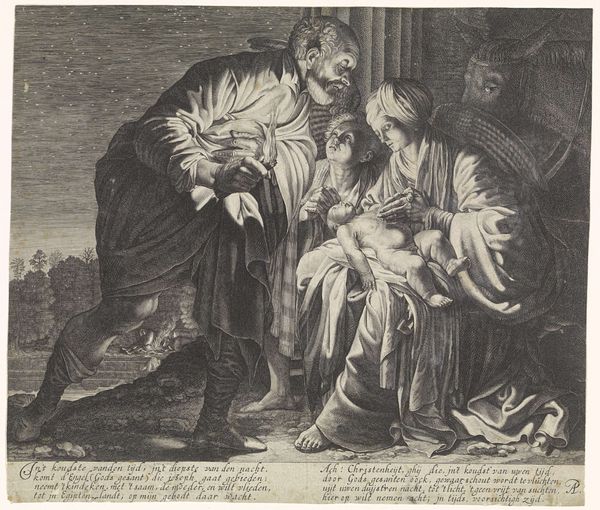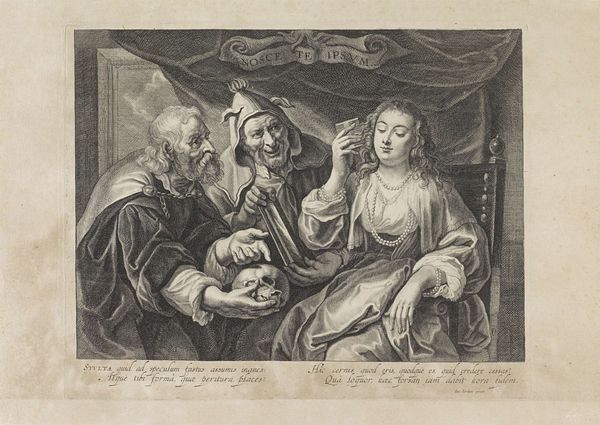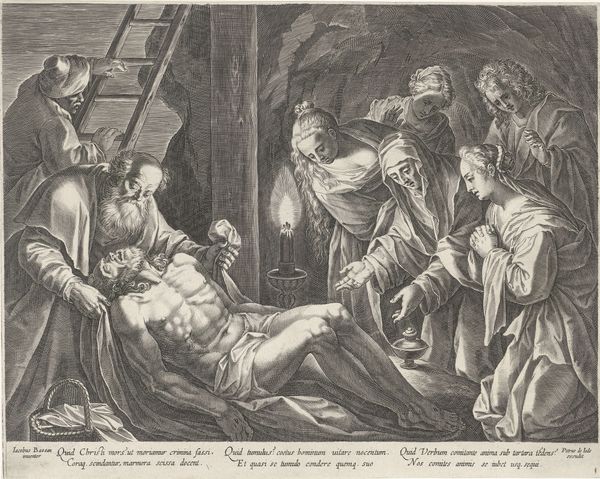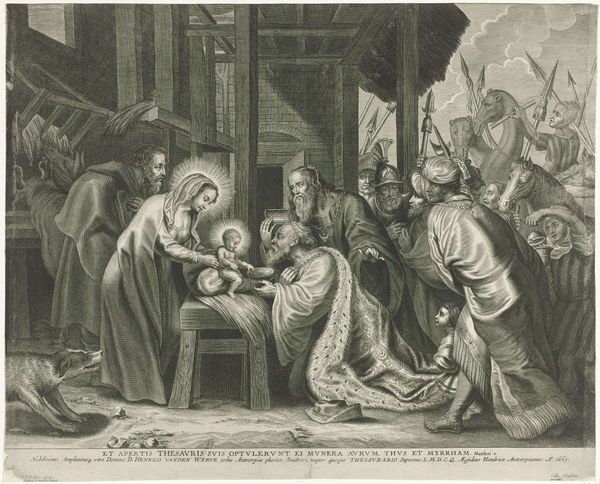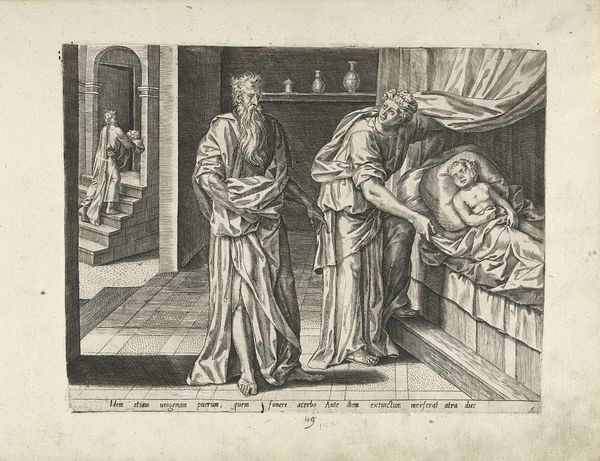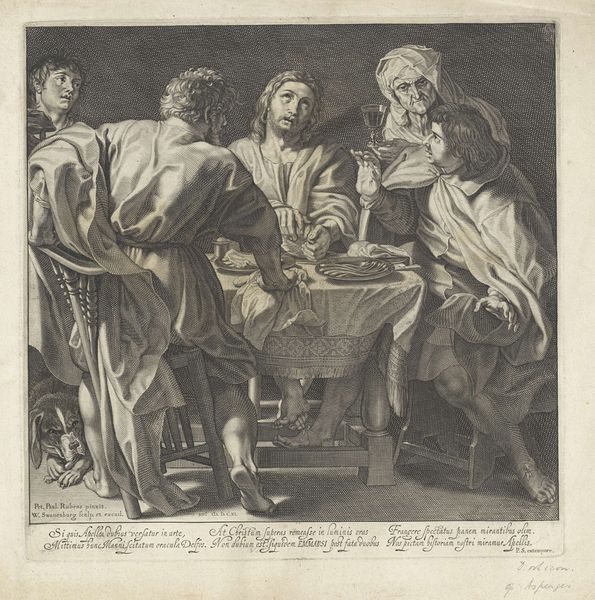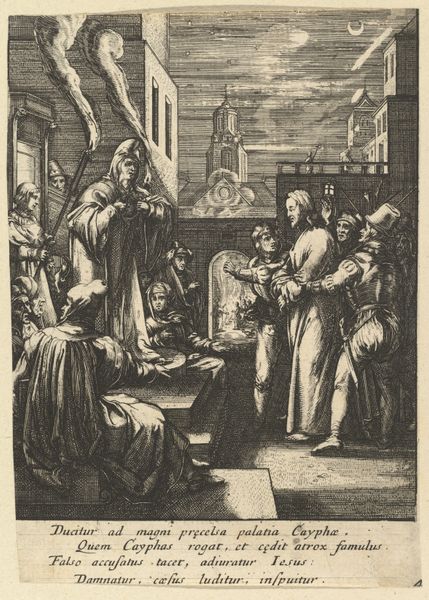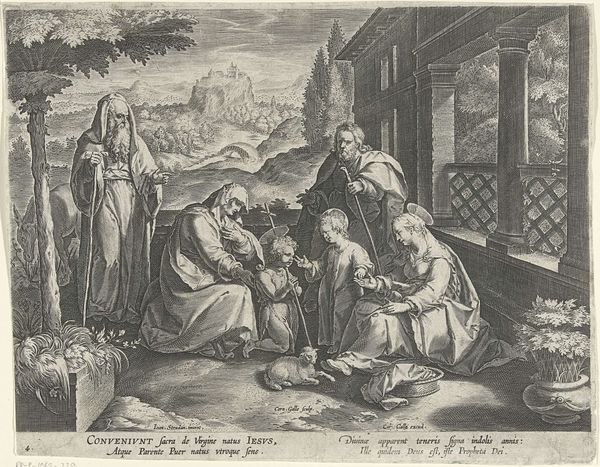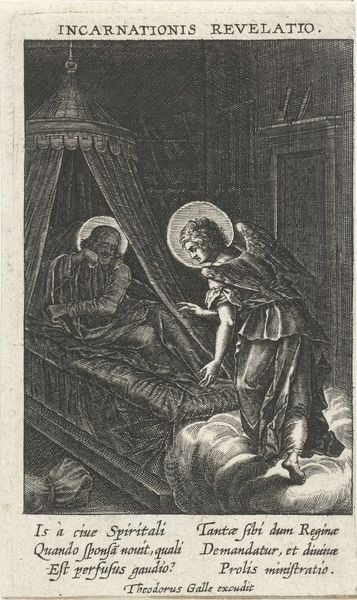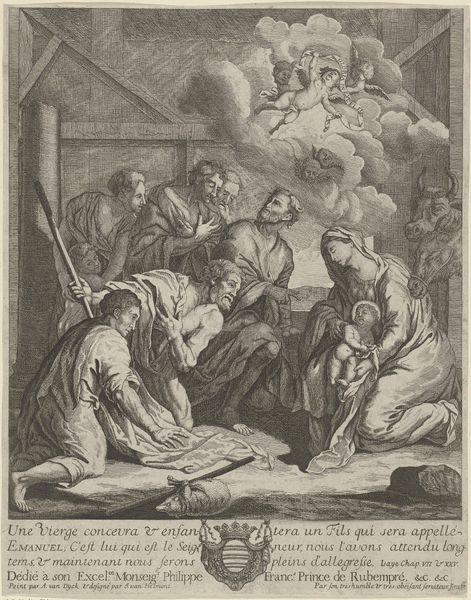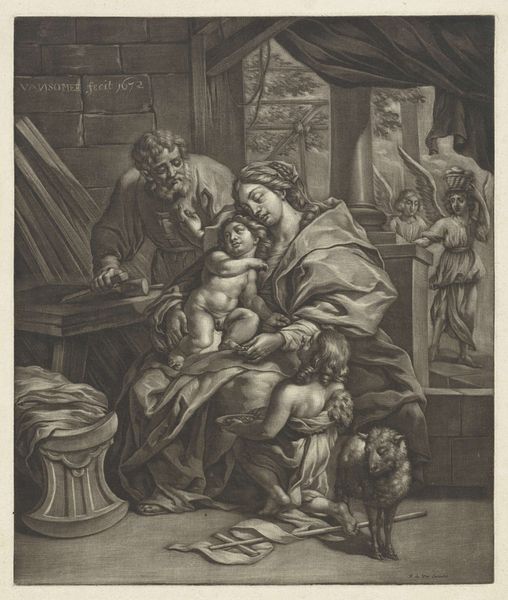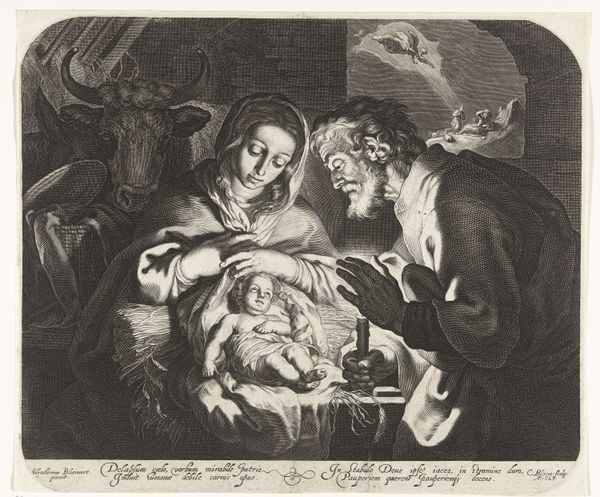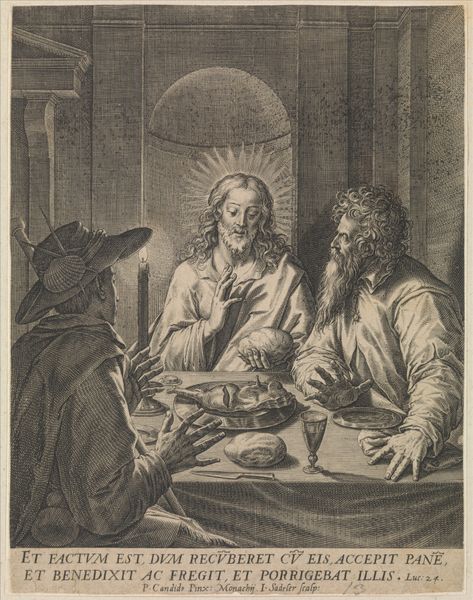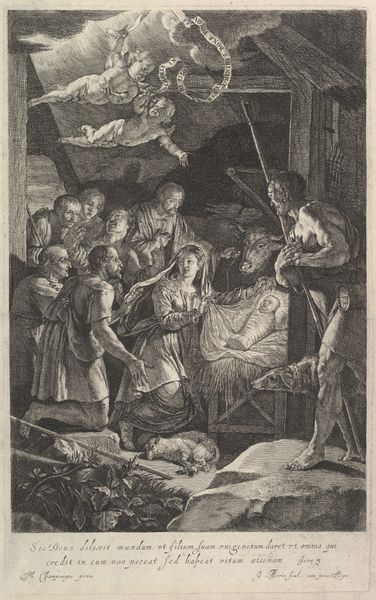
Christ and Nicodemus: A Night Piece 1626 - 1674
0:00
0:00
drawing, print, etching, paper, engraving
#
drawing
# print
#
etching
#
caricature
#
paper
#
genre-painting
#
history-painting
#
engraving
Dimensions: 248 × 317 mm (image); 386 × 326 mm (plate); 327 × 426 mm (sheet)
Copyright: Public Domain
Curator: I’m immediately struck by the stark contrasts in this engraving. The darkness seems to press in around these two figures illuminated by what must be candlelight, but it looks as if there are two distinct light sources, creating almost a visual friction. Editor: Indeed. This print, made by Peeter de Jode the Younger between 1626 and 1674, is entitled "Christ and Nicodemus: A Night Piece." It's an etching and engraving on paper, currently held at the Art Institute of Chicago. The play of light is intentional, drawing heavily on Northern European traditions of chiaroscuro. Curator: Chiaroscuro immediately brings to mind dramatic storytelling— the clear demarcation of good and evil, highlighting the moral and spiritual tension between subjects. I think that contrast, while technically a study of light, heightens the symbolic meaning of the moment captured. We have this intense beam illuminating Jesus and this far more subtle, human light near Nicodemus. Editor: It also hints at the socio-political dynamics at play. Nicodemus, a Pharisee and a member of the Jewish ruling council, comes to Jesus under the cloak of darkness. It speaks volumes about his initial reluctance, maybe fear, to openly associate with someone considered a radical figure. He doesn't want to risk ostracization from his community, and, like many of the upper class, desires a position of power that would crumble when facing social change. Curator: So Nicodemus literally meets Jesus in the dark... yet the encounter is cast with so much symbolic clarity? I'm thinking that for centuries, darkness was frequently employed as an archetype. This could indicate hidden or subconscious desires, potential, mystery, even menace, contrasting that to the promise of "divine" light. The way the two figures seem to have very distinct illumination also says something about Jode's biases. Nicodemus looks far more flawed with shadows cast over the contours of his face while Christ looks almost idealized and inhumanely glowing. Editor: Absolutely. The artist crafts this scene to position Jesus as the sole beacon of truth in a world steeped in tradition and the established social hierarchy that must make way for greater change. The tension in the image mirrors the tension between adherence to old doctrines and acceptance of radical new philosophies in 17th-century Europe and possibly beyond. It’s a conversation between two worlds, each illuminated—or obscured—by its own belief system. Curator: That's an incredible nuance and something that the artist clearly captures through very precise and measured iconographic use. Thank you for offering that lens. It provides new and fresh symbolic life to what could be easily understood only as just another classical work of art. Editor: The pleasure was all mine. This artwork continues to reveal new layers, prompting us to confront timeless themes that connect with present concerns and that push for continued social justice.
Comments
No comments
Be the first to comment and join the conversation on the ultimate creative platform.
